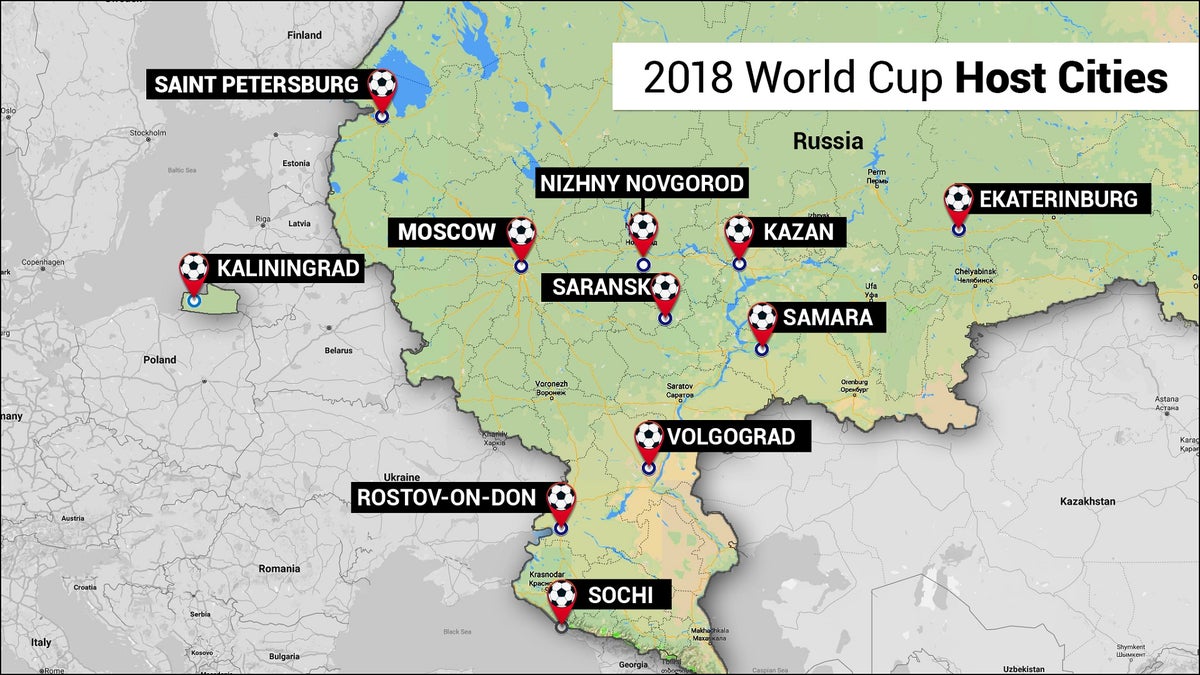
2018 FIFA World Cup games will take place in 12 different stadiums across Russia.
The 2018 FIFA World Cup will be here before you know it.
Some of soccer’s biggest names will compete in the 64-game tournament, which will be held in 12 different stadiums across Russia over the next few weeks.
These spaces, spread across 11 different cities, can hold tens of thousands of people. (The “anticipated gross capacity” for each of the venues in a “finished state” is listed below and comes from FIFA.)
2018 FIFA WORLD CUP: WATCH LIVE MATCHES STREAMING ON FOX SPORTS FROM JUNE 14 TO JULY 15
Read on to see where the matches will take place and what else you should know.
Kaliningrad Stadium
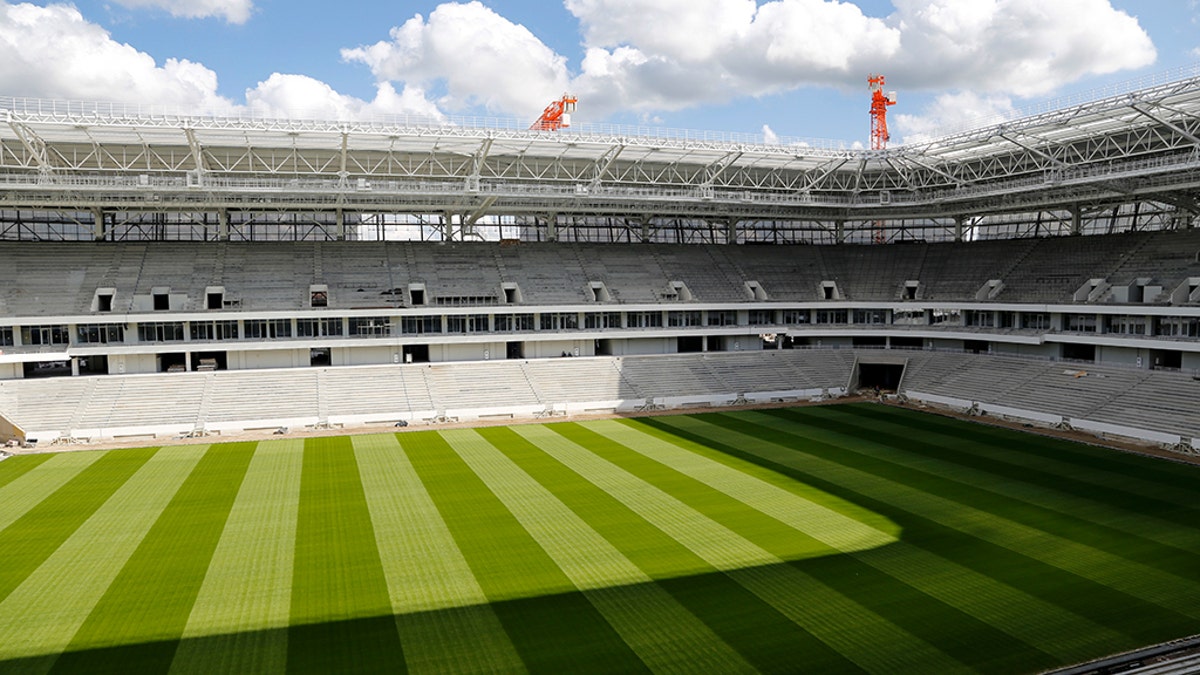
Kaliningrad Stadium in Kaliningrad, Russia. (AP)
Capacity: 35,000
Kaliningrad Stadium is located in Kaliningrad, which is the capital of a sliver of Russian land cut off from the rest of the country and nestled between Poland and Lithuania.
FIFA says the venue was constructed “on Oktyabrsky Island, right in the heart of Kaliningrad.”
“The selection of Kaliningrad as a host city has prompted the local authorities to develop the island, which for many centuries has been a wilderness, left largely untouched," FIFA added.
2018 FIFA WORLD CUP: FULL MATCH SCHEDULE
The stadium is a compact, modest design which has been built quickly. There have been repeated allegations of corruption involving the stadium, including several arrests.
Fans can expect to see four group stage games unfold there.
Saint Petersburg Stadium

Saint Petersburg Stadium in St. Petersburg, Russia. (AP)
Capacity: 67,000
Saint Petersburg Stadium is located in the northern Russian city of the same name - and its design is out of this world.
“The architect's vision for Saint Petersburg Stadium was of a spaceship that has landed on the shores of the Gulf of Finland,” according to FIFA.
The stadium also has other features.
“Equipped with a retractable roof and a sliding pitch, it’s able to host any type of event at any time of year - even in winter, the temperature inside the stadium is 15 degrees Celsius,” the association says.
Saint Petersburg Stadium hasn't been without issues.
Severe delays and soaring costs were just the start for a project which became notorious for employing North Korean laborers, one of whom was among at least eight people to die on the stadium and 17 across all World Cup construction sites, according to the trade union Building and Wood Workers’ International.
A deputy governor of St. Petersburg has also admitted his role in a $850,000 scheme to siphon off the stadium’s budget, though officials say the true picture of corruption was much larger.
The arena remains plagued by a leaking roof and a pitch which had to be replaced repeatedly. Confederations Cup games, however, passed largely without incident and Russia says it’s working to iron out any remaining problems.
During the World Cup, the stadium will host the third-place match after hosting a semi-final and four group stage matches.
Luzhniki Stadium
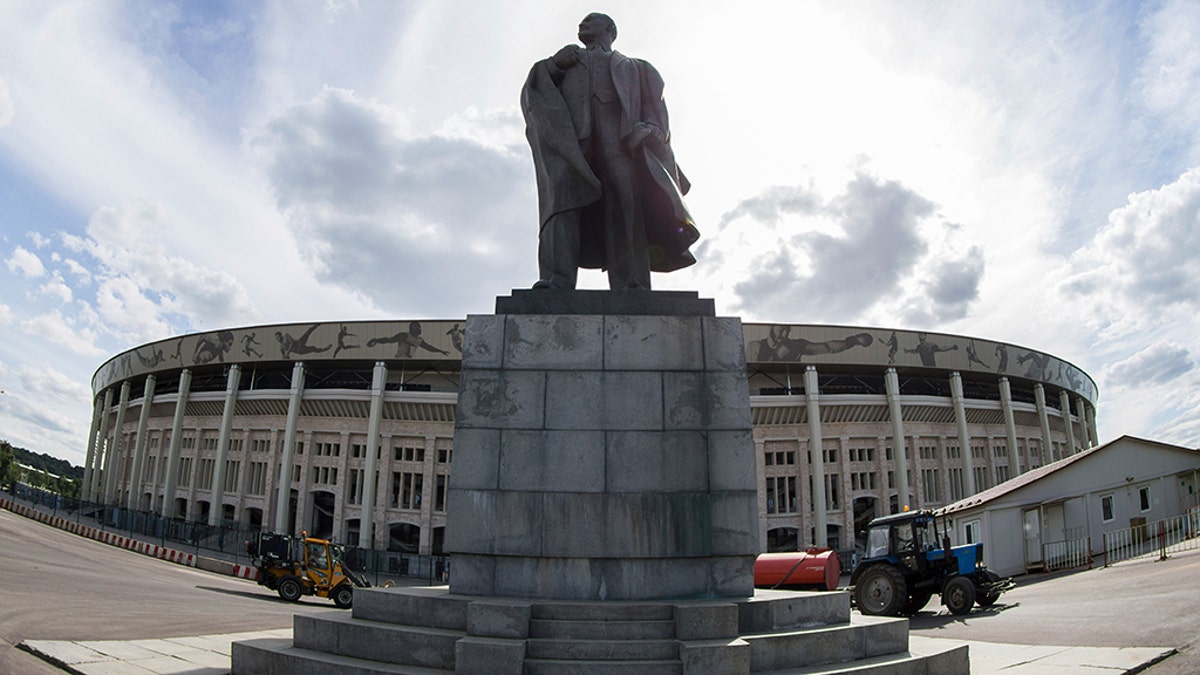
Luzhniki Stadium was originally built in 1956. (AP)
Capacity: 80,000
Originally built in 1956 to showcase the sporting might of the Soviet Union, this Moscow stadium has been transformed to host the World Cup final, which will take place on July 15.
“Work to rebuild Luzhniki Stadium for Russia 2018 began in 2013,” FIFA says online. “One of the crucial aspects of the project was preserving the historical façade of the stadium, which has become one of Moscow’s true landmarks.” The stadium reopened in November.
Aside from the final, the stadium will host four group stage matches, a knockout match and a semi-final.
Spartak Stadium

Spartak Stadium is located in Moscow and serves as the home of the Spartak Moscow soccer team. (AP)
Capacity: 45,000
This stadium, which opened in 2014, is also located in Moscow and serves as the home of the Spartak Moscow soccer team. It is usually known as the Otkritie Arena, but FIFA rules on sponsorship mean a temporary name change for the tournament.
FIFA explains the stadium’s design features online.
“Its façade takes the form of chain mail consisting of hundreds of little diamonds representing the Spartak logo,” FIFA says. “The façade can be changed depending on which team is playing. For Spartak matches, the arena is bathed in red-and-white; when the national team is in town, it switches to the colours of the Russian flag.”
The towering statue of a gladiator outside is a nod to Spartak being named after the Roman slave rebel Spartacus.
Four group stage games will unfold at the stadium, as well as a knockout game.
WORLD CUP SCHEDULE, HOW TO WATCH AND OTHER THINGS TO KNOW
Rostov Arena
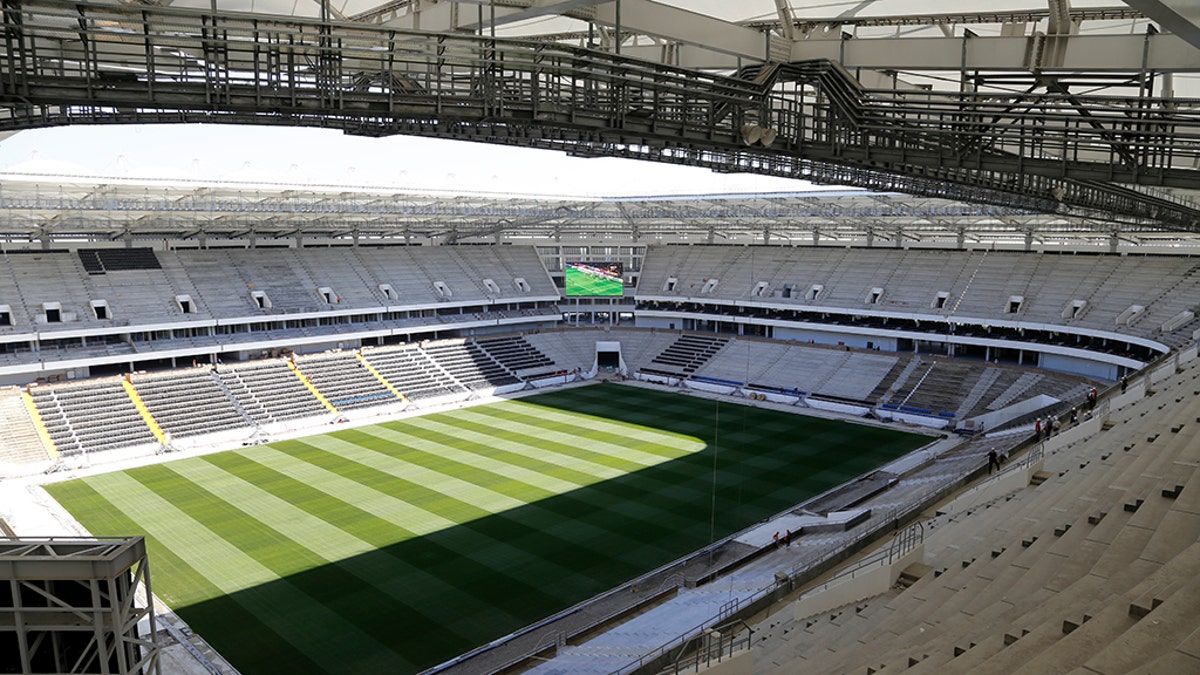
Rostov Arena is located in Rostov-on-Don. (AP)
Capacity: 45,000
Rostov Arena is located in Rostov-on-Don.
“Rostov Arena’s original design blends harmoniously into the picturesque landscape. The shape of the arena’s roof imitates the meanderings of the Don River," FIFA explains.
The stadium is supposed to become the center of a vast new housing and leisure development after the World Cup, and will also be the new home of the soccer team FC Rostov.
Four group stage matches and a knockout match will happen at this venue.
Fisht Stadium
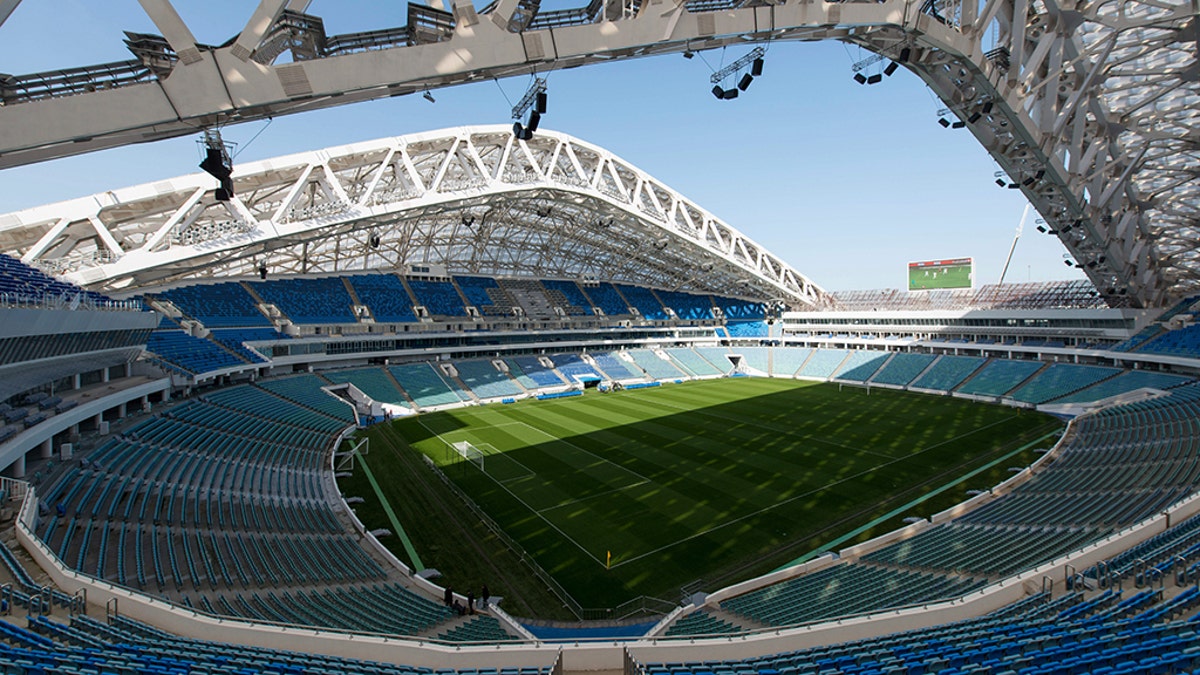
Fisht Stadium in Sochi hosted the opening and closing ceremonies for the 2014 Winter Olympics. (AP)
Capacity: 48,000
Nestled by the Black Sea, Fisht Stadium in Sochi hosted the opening and closing ceremonies for the 2014 Winter Olympics.
“Fisht Stadium was originally named after Mount Fisht, a peak in the Caucasus range of mountains,” FIFA says online. “In the local language, Adygeyan, 'fisht' means 'white head.'”
After four group stage matches, fans can expect to see a knockout match and a quarterfinal happen here.
Volgograd Arena
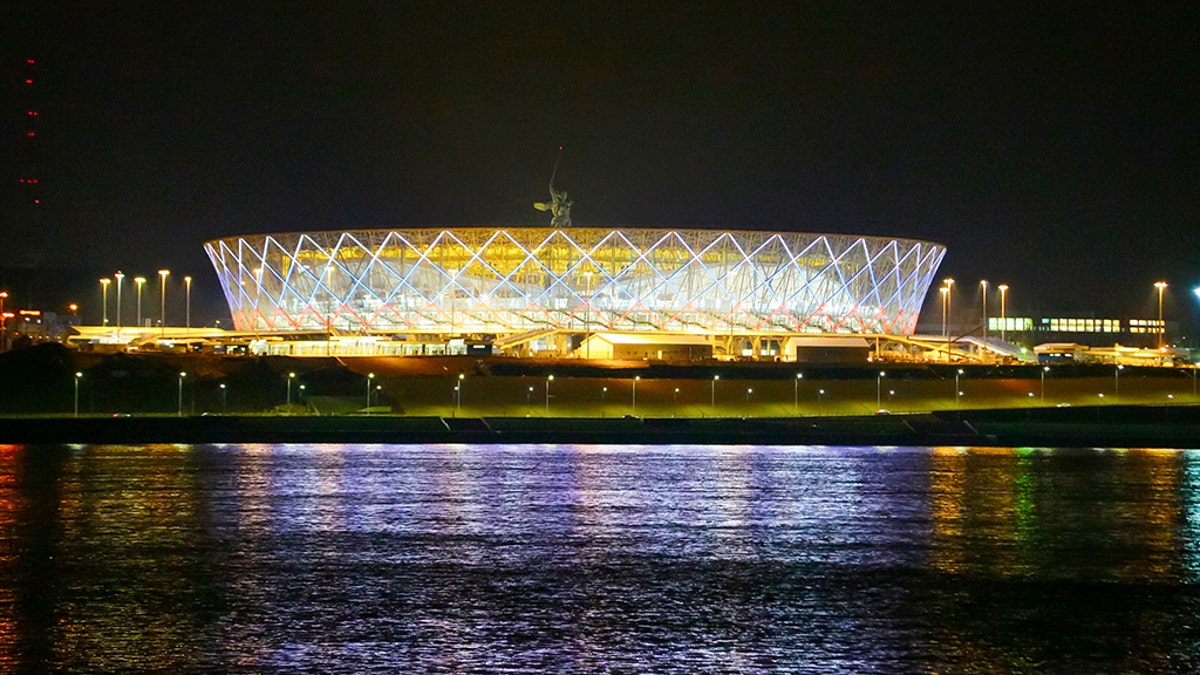
Volgograd Arena is located not far from The Motherland Calls” sculpture. (AP)
Capacity: 45,000
Volgograd Arena is located in Volgograd, which was once known as Stalingrad.
“The design for the façade supports and the windbreaks embody aspects of a Victory Day firework display,” FIFA says. “The special way in which the stadium’s roof has been constructed, with cables reminiscent of the spokes of the wheel on a bicycle, lends the arena an extra element of airiness.”
Workers during construction had to deal with finding unexploded munitions and soldiers’ corpses from the Battle of Stalingrad.
The stadium sits at the foot of Russia’s best-known World War II memorial. The location meant the stadium had to be designed with a low roof-line so as not to obscure views of “The Motherland Calls” sculpture.
Four different group stage matches are scheduled to happen at this venue.
Nizhny Novgorod Stadium
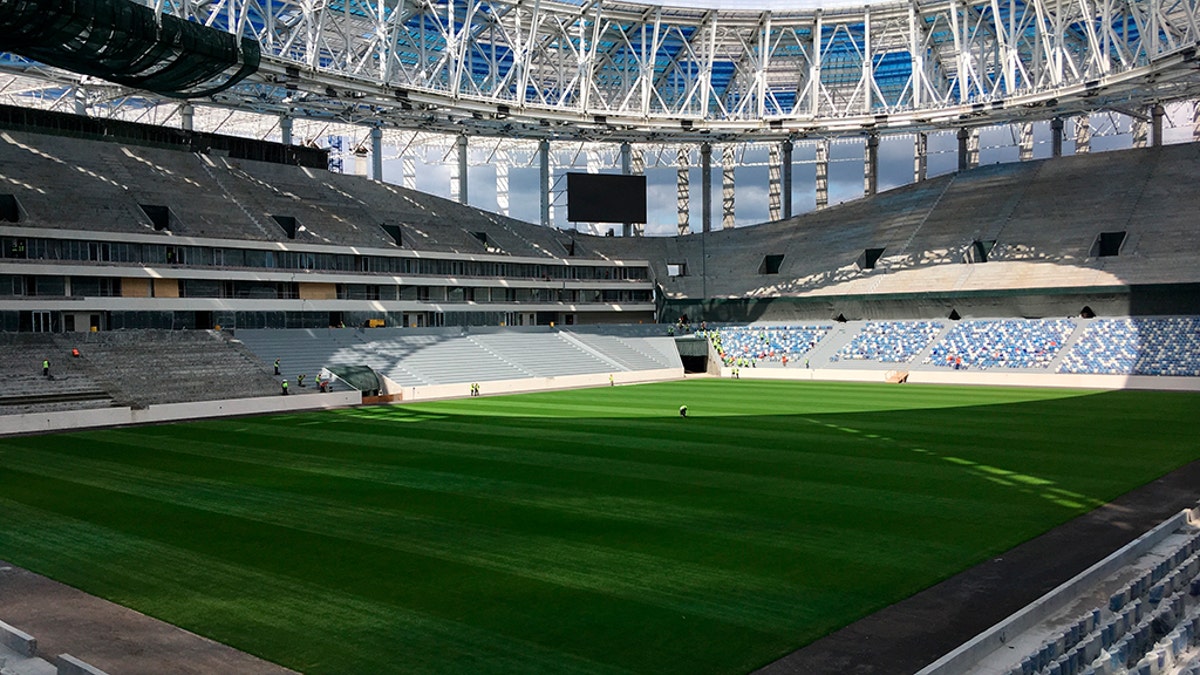
The Nizhny Novgorod Stadium is located in Nizhny Novgorod, a historic city located around four hours east of Moscow. (AP)
Capacity: 45,000
The Nizhny Novgorod Stadium is located in Nizhny Novgorod, a historic city located around four hours east of Moscow.
Its roof seems to float atop white columns and offers fans views of the Oka and Volga rivers.
FIFA says the venue’s “design is inspired by aspects of nature in the Volga region - water and wind.”
Four group stage matches are set to unfold here, before the stadium hosts a knockout match and a quarterfinal.
WORLD CUP ATTENDEES URGED TO GET MEASLES VACCINE: SIGNS AND SYMPTOMS OF THE VIRAL ILLNESS
Mordovia Arena

Mordovia Arena in Saransk, Russia. (Public domain)
Capacity: 44,000
“The stadium has been designed in the shape of an oval,” FIFA says of the venue located in Saransk. “Its bright range of colours, combining orange, red and white, honours the distinctive colour palette of Mordovia's arts and crafts.”
Mordovia Arena is slated to be the site of four group stage matches.
Large parts of the stadium are temporary, meaning it can be reduced to a 25,000-capacity venue after the tournament.
FIFA says this "will make the arena more effective in the future, with the space vacated being used for indoor volleyball, basketball and tennis courts, as well as fitness centres.”
Kazan Arena
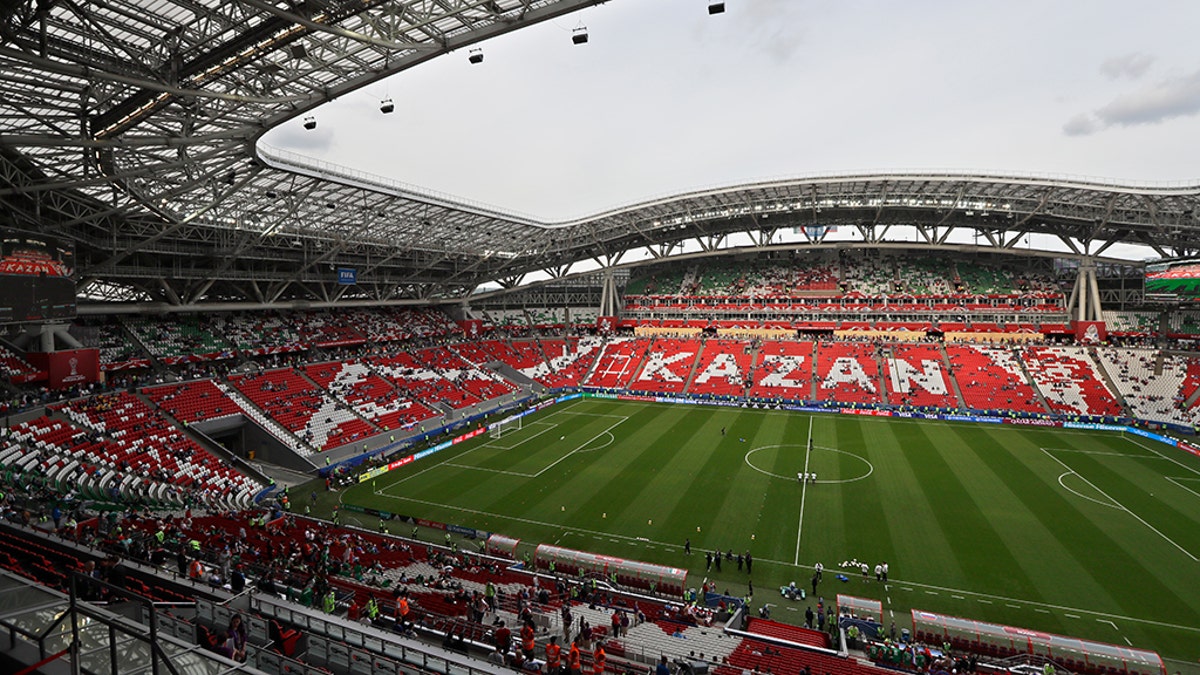
Kazan Arena in Kazan opened in 2013. (AP)
Capacity: 45,000
Kazan Arena, located in Kazan, opened in 2013 as the first of Russia’s new generation of football stadiums and was used as the prototype for the other new arenas.
It's a versatile venue which has hosted Confederations Cup football, ceremonies, and even the 2015 world swimming championships, where a temporary pool was installed.
There will be four group stages matches here, as well as a knockout match and a quarterfinal.
Samara Arena

Samara Arena features a glass dome evoking the city’s history as a center of the Russian space program. (AP)
Capacity: 45,000
“Samara Arena's design concept is dominated by the theme of space, as a tribute to the traditions of the region, and its renowned aerospace sector,” FIFA says, adding that construction on the venue in Samara began in July 2014.
Its ambitious design — a glass dome evoking the city’s history as a center of the Russian space program — needed extra time to build but finally opened in April.
Four group-stage matches and a quarterfinal will take place at the arena.
Ekaterinburg Arena
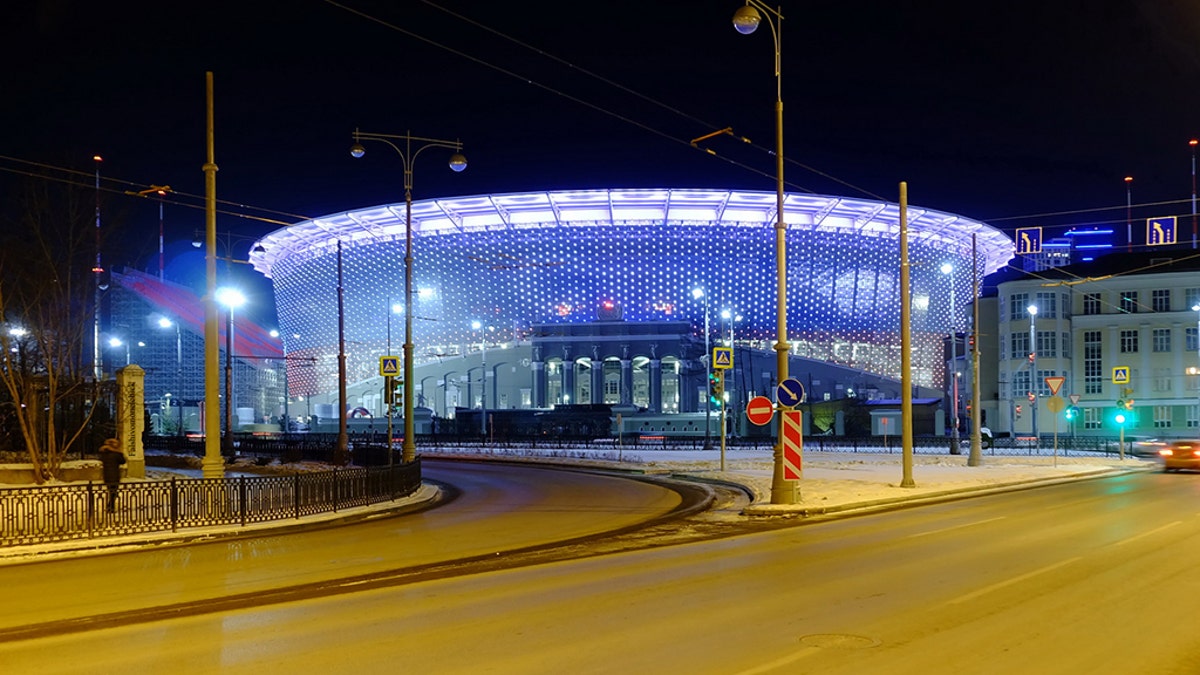
Ekaterinburg Arena in Yekaterinburg, Russia, is famous for its unusual design. (Public domain)
Capacity: 35,000
Even before it opens, the stadium in the Ural mountain city of Yekaterinburg is famous for its unusual design. In an attempt to keep costs down, the stadium has 12,000 temporary seats — which are on vast towers of scaffolding stretching over the walls of the main stadium.
Human Rights Watch alleged that some workers were required to work in temperatures of minus-25 degrees Celsius, and weren’t given enough breaks to stay warm.
The arena will host four group stage matches during the 2018 World Cup.
The Associated Press contributed to this report.
